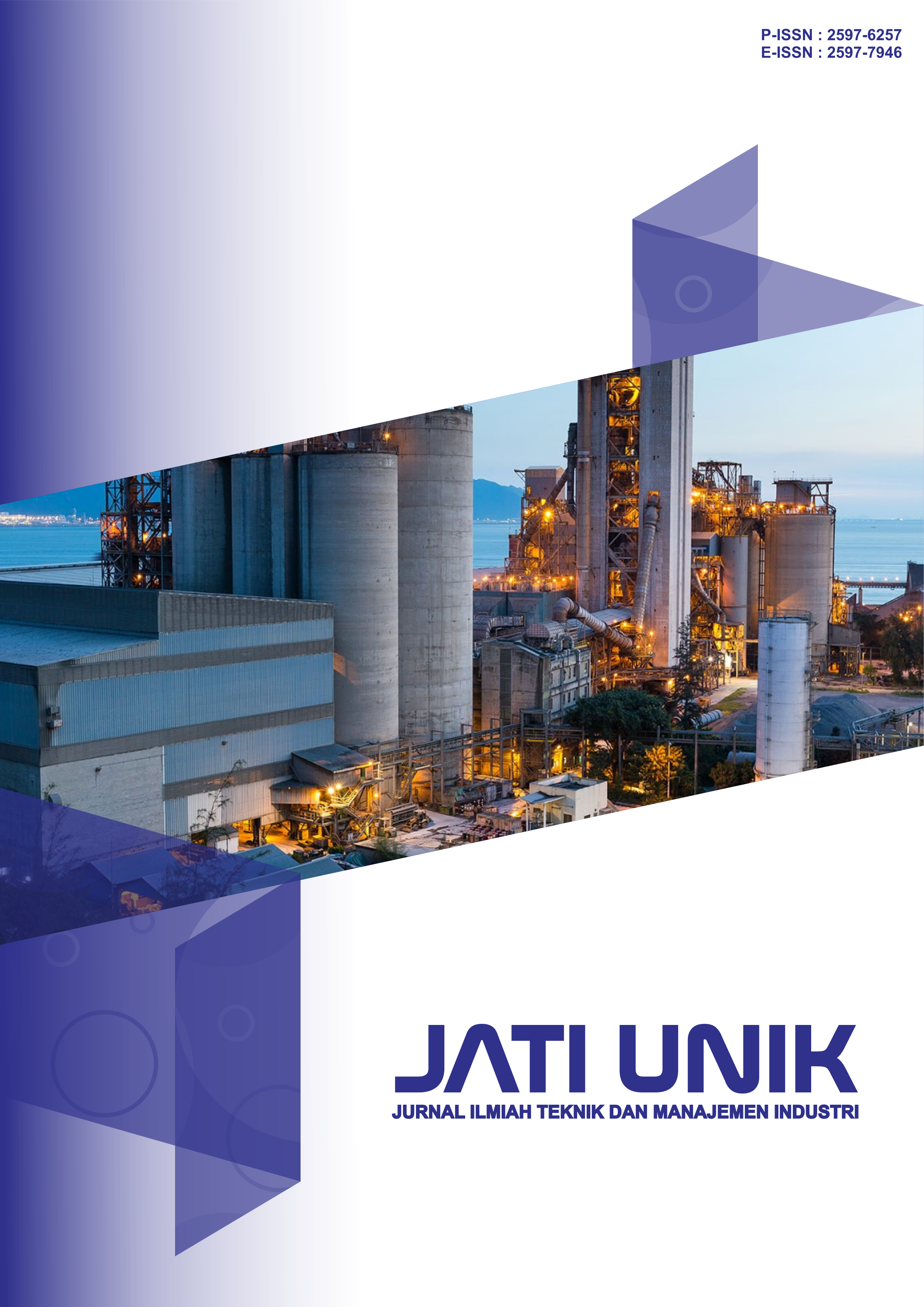Pengendalian Kualitas Produk Songkok untuk Meminimalkan Cacat Produksi Menggunakan Metode Seven Tools
DOI:
https://doi.org/10.30737/jatiunik.v7i1.4269Keywords:
Production Defect, Quality Control, Seven Tools, Songkok ProductAbstract
Songkok is an iconic product from Gresik City which is a cultural heritage rich in meaning. Therefore, maintaining songkok quality needs to be done more carefully in order to maintain the integrity of this product in an increasingly competitive industry. Two Pendopo MSMEs are one of the largest songkok producing MSMEs in Gresik. However, this business is facing problems with the number of defective products produced. The purpose of this study is to minimize songkok production defects in MSMEs Two Pendopo. This research uses the seven tools method. With a total production of 4,250 units carried out over 25 working days, it was found that the largest defect was in irregular threads (4.6%). Control charts are used to monitor production variability. Remedial action involves training workers, repair of yarn material, and better environmental conditions. Periodic monitoring and evaluation is implemented to control product quality effectively.
References
E. Mardanugraha and J. Akhmad, ‘Ketahanan UMKM di Indonesia menghadapi Resesi Ekonomi’, Jurnal Ekonomi dan Pembangunan, vol. 30, no. 2, pp. 101–114, 2022 DOI: https://doi.org/10.14203/JEP.30.2.2022.101-114
P. Amelia and B. Miftahurrohmah, ‘Dinamika Umkm Di Gresik-Jawa Timur Pada Perkembangan Era Digital Dengan Pendekatan Sistem Dinamik’, Jurnal Tekno Kompak, vol. 14, no. 1, pp. 17–21, 2020. DOI: https://doi.org/10.33365/jtk.v14i1.532
H. Suwardana, ‘Revolusi industri 4. 0 berbasis revolusi mental’, JATI UNIK: Jurnal Ilmiah Teknik Dan Manajemen Industri, vol. 1, no. 2, pp. 109–118, 2018. DOI: https://doi.org/10.30737/jatiunik.v1i2.117
S. F. Najiyah, ‘Sejarah Penutup Kepala di Indonesia: studi kasus pergeseran makna tanda Peci Hitam (1908-1949)’, 2019.
R. Ratnadi and E. Suprianto, ‘Pengendalian Kualitas Produksi Menggunakan Alat Bantu Statistik (Seven Tools) Dalam Upaya Menekan Tingkat Kerusakan Produk’, Jurnal Industri Elektro dan Penerbangan, vol. 6, no. 2, 2020.
M. Smetkowska and B. Mrugalska, ‘Using Six Sigma DMAIC to improve the quality of the production process: a case study’, Procedia-Social and Behavioral Sciences, vol. 238, pp. 590–596, 2018. DOI: https://doi.org/10.1016/j.sbspro.2018.04.039
Downloads
Published
Issue
Section
License
Copyright (c) 2023 JATI UNIK : Jurnal Ilmiah Teknik dan Manajemen Industri

This work is licensed under a Creative Commons Attribution-NonCommercial-NoDerivatives 4.0 International License.
Information regarding Copyright and Licensing at JATI UNIK as follows:
- Licensed Use of Non - Commercial Articles will be governed by the Creative Commons Attribution license, which is featured on the Creative Commons Attribution Non-Commercial Share A Like 4.0 International License.
- The author guarantees that the articles published through JATI UNIK are original and do not contain statements that violate the law do not violate others' rights are subject to copyright, which is held exclusively by the author and free from the rights of third parties. The author is allowed to quote from various sources used for research and not to harm any party.
- JATI UNIK disseminates articles published with the rules set by Creative Commons. UNIK JATI license allows users to copy, distribute, display, and work for non-commercial purposes. Users also need to connect authors and JATI UNIK with the distribution of articles in journals.
- The Author rights, namely copyrights, ownership rights, patents, rights to use the substance of articles in the future, rights to reproduce articles for personal purposes and not to be traded, rights to conduct personal archives, rights to contract used for the non-exclusive distribution of articles published in the form a book and acknowledge the initial publication of the article originating from JATI UNIK.
- Suppose articles published by the author through JATI UNIK are compiled with other authors. In that case, it is necessary to create a form containing the authority of all authors involved in the article's production by including the agreement agreed upon by all authors in the article.
- The next point is, the agreement can be terminated if the author or JATI UNIK violates the agreement and cannot make repairs to the customer within a maximum of 2 months after being given information asking for the violation to be corrected. If there is no violation of the agreement, the license will automatically terminate and affect UNIQUE JATI UNIK.
- Regarding royalties, so far, if it is following applicable legal regulations, the author will waive his right to collect royalties on articles that have been licensed by JATI UNIK.
- In publishing the article, the editorial process is successful. JATI UNIK will continue it. JATI UNIK has the right to adjust articles related to punctuation, spelling, capital letters, references used, and usage adapted to JATI UNIK. The author acknowledges that the article can be published and accessed free of charge by the public.
Deprecated: json_decode(): Passing null to parameter #1 ($json) of type string is deprecated in /home/ojs.unik-kediri.ac.id/public_html/plugins/generic/citations/CitationsPlugin.php on line 68















